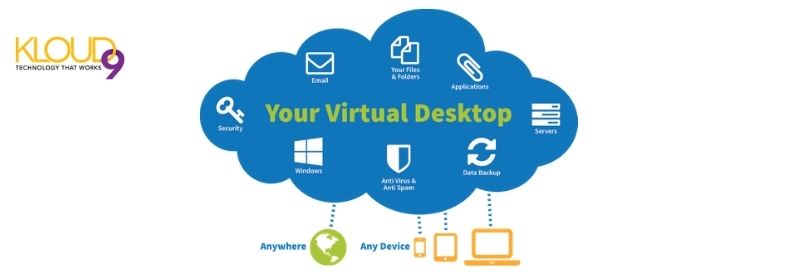Some years ago, corporate offices only had hardware computer systems – the central processing unit (CPU, which is the main system), desktop monitor, mouse, and keyboard. At that time, virtual offices were a luxury not many businesses could afford. They were used only by those businesses, which had remote workers or those businesses which could not do without remote working. However, the landscape of things has changed with advancements in technology. Today, most businesses are adopting cloud solutions such as virtual desktops.
The demand for virtual desktops has significantly increased as many employees are now working remotely due to the Covid-19 pandemic. Those companies that did not adopt virtual desktops before this time are now being forced to use them. According to a survey carried out, it was found that there is an increase in satisfaction and work productivity of the employees who are working through virtual desktops. The reasons for increased satisfaction and work productivity of employees when they work through virtual desktops is what we will be looking at in this guide. So, if you want to know how virtual desktops increase employee satisfaction, make sure you complete the reading of this guide. Let's now consider the reasons why employees have greater satisfaction working through virtual desktops.
Reasons for Increased Employee Satisfaction with Virtual Desktops
1. Employees have access to everything:
Employees working through virtual desktops acknowledge that they have access to everything they need. When working in a cloud workspace, an employee has access to all that he would need if he were working in a physical office. Virtual desktops give employees the flexibility of a centralized portal where they can access and use a wide range of tools provided to them by cloud services. For example, employees can use the software as a service (SaaS) tools, server applications, and file/folder systems. These tools and applications that an employee can use are controlled directly through cloud platforms; all the employee has to do is sign in. This access to tools and applications is one of the reasons for the increased satisfaction in employees when they are working through virtual desktops.
2. Virtual desktops offer employees working flexibility and mobility:
Virtual desktops can be used anywhere. Whether an employee is on the train or in a room, he can still work on the desktop. An employee can access the desktop from any location; it makes no difference where the employee is. The cloud workspace assigned in the name of the employee stores all the apps, data, and personal settings he needs for working remotely. So, an employee can contribute to the office even when he is away from the office. This work flexibility which virtual desktops provide is another reason for the increased satisfaction in employees when they are working through virtual desktops.
3. Virtual desktops provide employees with high-level protection and built-in security system:
Virtual desktops use unified security policies; with these policies, backup from a server can be conveniently taken, managed, or administered in a secure data center. Employees working through virtual desktops are subjected to granular security measures. What this means is that employers can control their working environment and manage its data security levels. The data protection level can be increased by enforcing a single sign-on option. The access and rights employees have when they are working remotely can be managed. Employees love the high-level data protection they get when working through virtual desktops and this helps increase their satisfaction.
4. Working with virtual desktops increases the work productivity of employees:
Virtual desktops gives employees access to a wide range of technologies and applications. For example, employees can access voice, collaboration, and SaaS videos and applications. As a result of this, employees are better motivated to work. They find work more engaging and interesting, and consequently, their productivity increases. Employees can get tasks completed easily when working through virtual desktops. Because of the increased productivity employees get when they work through virtual desktops, their satisfaction increases.
5. Virtual desktops increase employee’s ability to multitask:
Working through virtual desktops allows employees to multitask. Since employees are working from their comfort zone, the logical aspect of their brains and their mental ability is enhanced, consequently, their level of multitasking increases. Employees working through virtual desktops can accomplish more than one task at a time; this is something they love. This ability to multitask through virtual desktops gives employees increased satisfaction.
Conclusion
The use of virtual desktops increases employee satisfaction. The flexibility to work from anywhere, the ability to multitask, the increase in work productivity, and the data security that comes with virtual desktops give employees increased satisfaction. However, you need to know that the benefits of virtual desktops are not limited to employees alone. As well as boosting employee satisfaction, virtual desktops also aid organizations and business houses. If you are looking to increase the satisfaction of your employees, do consider embracing cloud solutions like virtual desktops.





You must be logged in to post a comment.